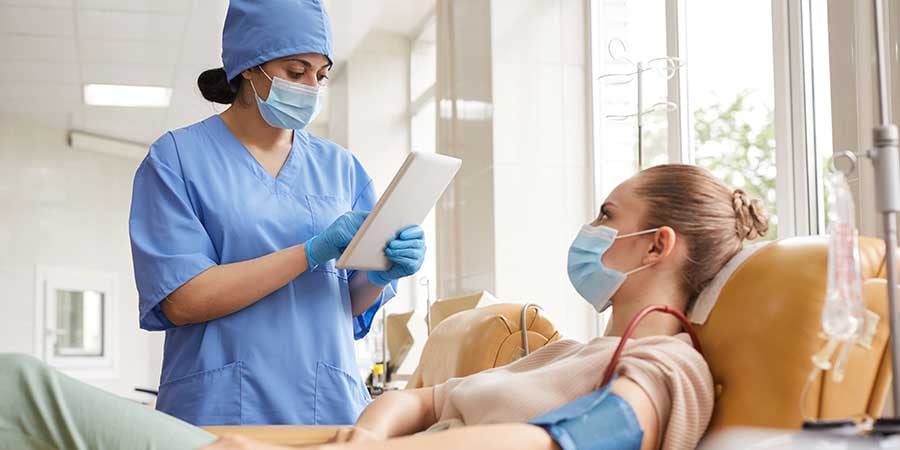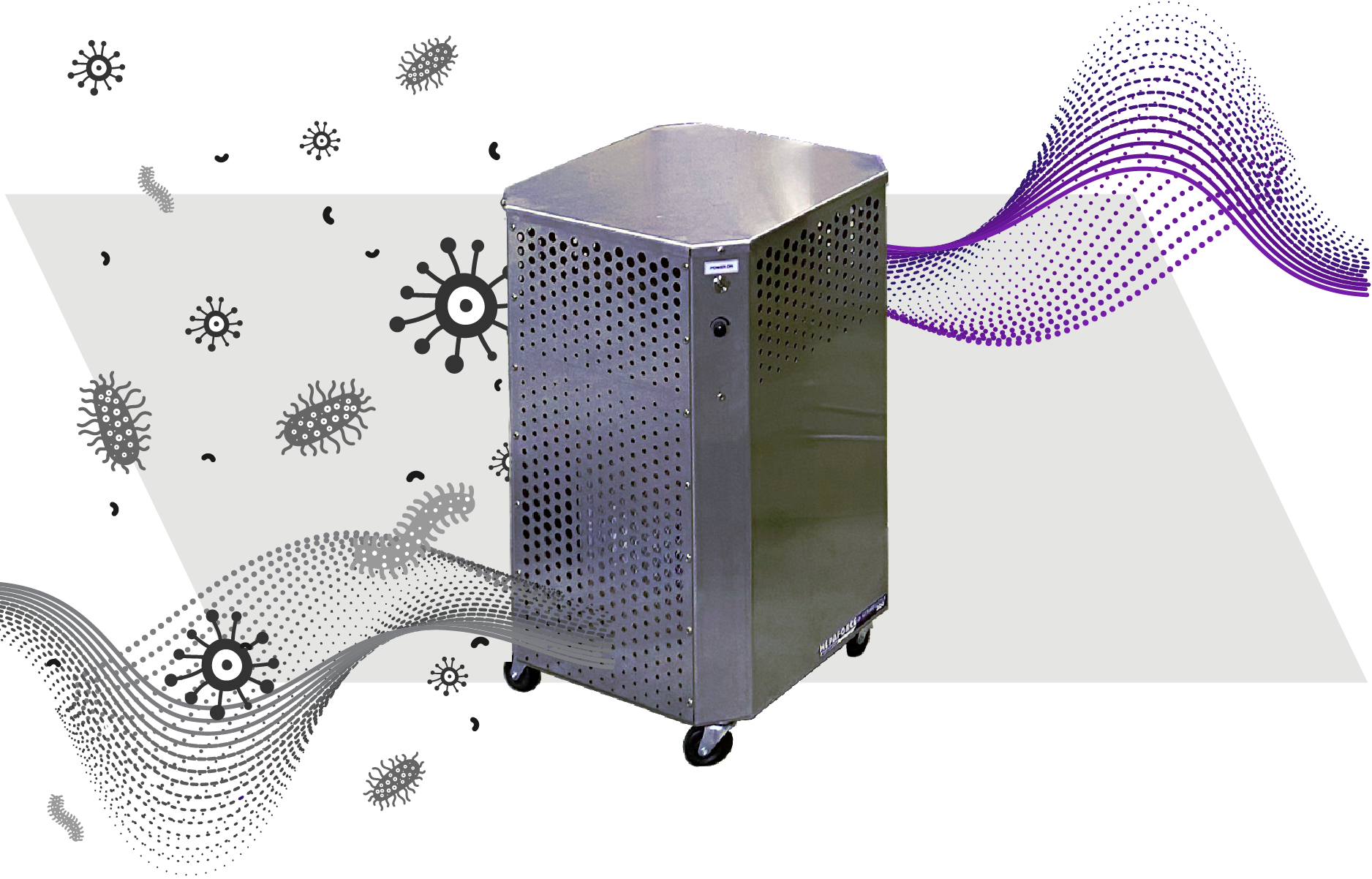Share this
Keep Healthcare Staff Healthy in Your Outpatient Facility
by HEPACART on Dec 07, 2021
Your outpatient facility can provide the best patient care when your whole team is healthy and focused.
Recent data suggest a surge in healthcare-associated infections in 2020 after they had declined for years. It certainly makes sense that outsized patient-to-staff ratios make it more difficult for healthcare workers to adhere to standard infection control protocols.
Absenteeism just exacerbates the problem. Productivity lost to staff illness cost employers $575 billion last year and took away 1.5 billion days of productivity. Could there be anything worse than the havoc wreaked by rampant absenteeism? Well, actually, yes, in healthcare, there is. It's called presenteeism.
A 2020 article by Cambridge University press makes this claim: Investigations of presenteeism as it relates to chronic health conditions have found that its costs greatly exceed those of absenteeism.
The authors report many examples of "infections presenteeism" by healthcare workers who showed up at work when ill, resulting in infections in patients. One survey found nearly 60% of resident physicians admitting they had worked while ill at least once in the past year.
We also learn that salaried workers are less likely to take unscheduled absences than hourly workers, and the authors conclude that "organizations should target their messaging at encouraging salaried staff to stay home when ill."
To sum up, absenteeism + presenteeism + pandemic = bad situation. Let's see if we can find some ways to address all three of these problems.
Reducing Presenteeism of Healthcare Staff
To reduce infectious presenteeism, it's imperative for hospital administration to support legitimate absenteeism for illness, especially among salaried staff.
Also crucial is training staff to reinforce routine implementation of infection control protocols. However, at the root of the problem is the persistence of conditions that allow staff to become infected while doing their job.
In other words, keeping people from getting sick in the first place will reduce the frequency of their coming to work while being contagious and will work to reduce absenteeism.

Reducing Absenteeism of Healthcare Staff
There's plenty of advice out there for anyone who types "reducing absenteeism" into Google. Some commonly offered solutions are:
- Develop a clear attendance policy
- Reward good attendance
- Create flexible work policies (including work from home)
- Do things to improve team culture
But we'll focus on the root problem: how do you prevent illness from being acquired and spreading in the workplace?
Fortunately, there are things a conscientious healthcare facilities admin can do to provide a safer, less infectious outpatient facility. Chief among them is deploying air purification equipment to clamp down on airborne pathogens to ensure that waiting rooms, restrooms, and other shared spaces have the cleanest air possible.
For a healthcare staff that provides outpatient care, for example, you'd want a first-rate air purification system with the capacity to reduce the viral load of influenza and SARS-CoV-2 viruses in waiting rooms and exam rooms.
What would be some necessary characteristics of such a system? Here are a few:
- Portability
- Durability
- Quiet operation
- Ease of maintenance
- Sufficient capacity (as measured by air changes per hour)
To learn about equipment that meets all these criteria, read on.
Affordable Outpatient Air Purifiers are Game-Changers
For many facility managers, avoiding capital costs is always attractive since one-size-too-small budgets are widespread.
You might also be among the dwindling number of optimists who still envision an end to the pandemic, a return to normal that would reduce the need for air-disinfection measures.
In either case, it will probably make more sense for you to rent rather than buy. At $95 a month, you can place hospital-grade HEPAFORCE® GermBuster 300 Room Air Purifiers anywhere in your outpatient facility. With these units in place, you can feel good knowing the air is being efficiently filtered and cleaned in high-risk areas.
On the other hand, if your budget is not so tight, you can purchase one or more, which makes sense because — let's face it — most of us expect SARS-CoV-2 and other infectious viruses to be part of our lives for the foreseeable future.
HEPAFORCE GermBuster 300 Room Air Purifier
If you roll this stainless steel unit into a room of 3,200 cubic feet (e.g., 20'x20'x12'), it will scrub all of the air in the room six times per hour. What exactly do we mean by "scrub," you may ask?
Well, a fan powered by a super-efficient electric motor pulls air in through a pre-filter at the bottom of the unit. This filter catches larger particles to extend the life of the HEPA filter that comes next. As the air flows through the HEPA filter, it removes at least 99.97% of dust particles, pollen, airborne bacteria, and anything else with a 0.3-micron diameter.

There's a good reason why that size particle is specifically targeted in the design of HEPA filters. In a previous post, we describe how Brownian motion foils the escape plans of smaller particles, making 0.3 microns the worst-case size — and the best criterion for filter efficiency.
HEPAFORCE GermBuster UV-FORCE Room Air Purifier
Just as adding a turbocharger to a naturally aspirated 2-liter engine can transform its performance, adding ultraviolet light to a GermBuster is the only improvement that makes sense when you're already catching more than 99.97% of the tiniest particles with purely mechanical filtration.
The added UV light emits ultraviolet radiation in the far-UVC wavelength, around 222 nanometers (billionths of a meter), which uses photon energy to break molecular bonds in viruses, bacteria, and spores. This means the air that exists has not only been scrubbed but thoroughly disinfected.
For some facility managers, the addition of disinfection will be worth the extra cost over the standard HEPA-filtered model, adding a layer of reassurance that everything possible has been done to make the air in highly infectious areas safer to breathe.
Conclusion
We understand that your outpatient facility can provide the best patient care experiences when your whole team is healthy and focused on their job. That's why we offer a state-of-the-art air purifier with medical-grade HEPA filtration for a low monthly subscription fee. It's ideal for filtering indoor air in dental offices, family practices, urgent care clinics, and other outpatient facilities. Why not feel good knowing the air is being effectively filtered in the most challenging parts of your facility?
More reading:

